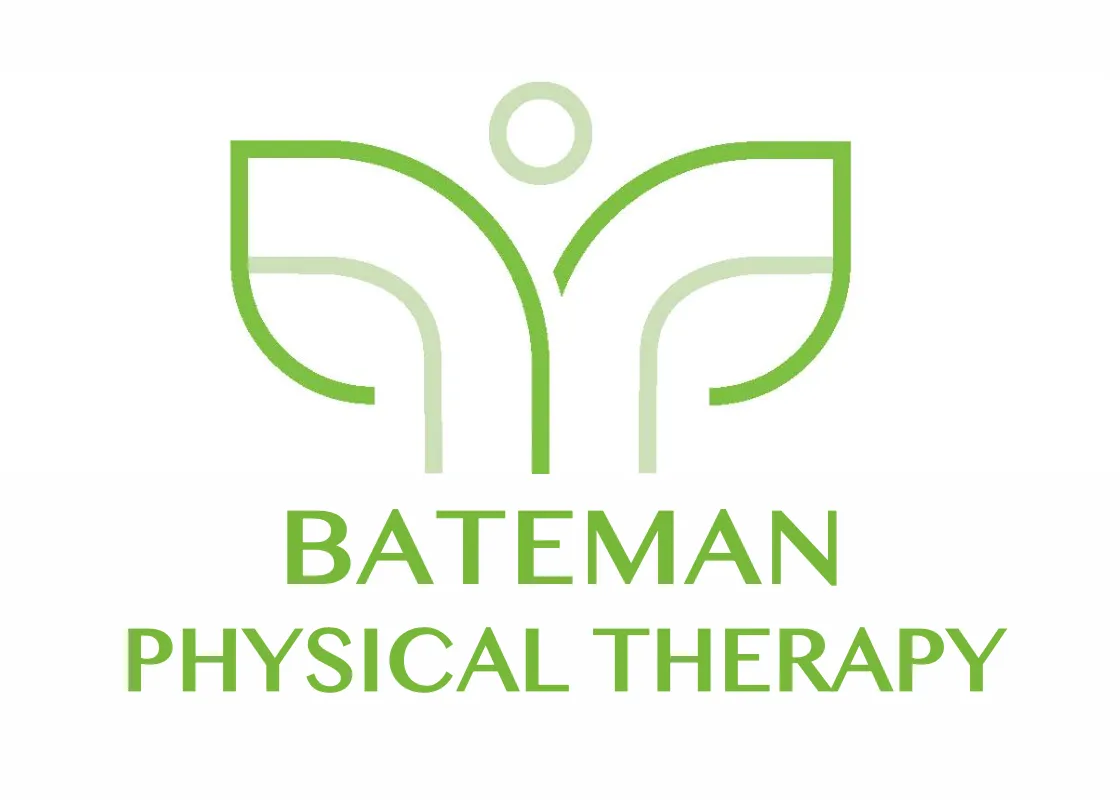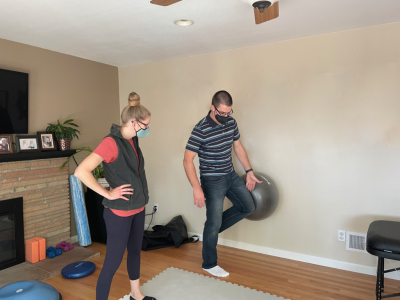This month we are talking about total joint replacements with a focus on the knee. This is a very common procedure and often has many questions associated with it! So we will quickly go over the following:
- What is a joint replacement
- What is a knee replacement
- What to expect with surgery
- Recovery time frames and physical therapy
- What to anticipate for activities post-replacement
- Jane’s patient success story
WHAT IS A JOINT REPLACEMENT?
According to Ortho Info (https://orthoinfo.aaos.org/en/treatment/total-joint-replacement/) a joint replacement is when a part of a joint is damaged (most commonly the cartilage is eroded causing bone on bone contact and pain) and replaced with new components that are usually metal, plastic, or ceramic allowing for a new joint to take place of the old joint.
WHAT IS A KNEE REPLACEMENT?
A knee replacement, also known as a knee arthroplasty (for more detailed info look here: https://orthoinfo.aaos.org/en/treatment/total-knee-replacement/), is comprised of the following 4 steps (taken from same resource as above):
- Prepare the bone: removal of injured cartilage (or what’s left) and small parts of underlying bone.
- Position the metal implants: metal components are placed where cartilage once was and creates a new surface for the knee joint (metal components are either cemented or “press-fit” into the bone).
- Resurface the patella (aka “knee cap”): is resurfaced and a plastic “button” is placed on the backside of the patella (not all surgeons do this – depends on the surgeon or what is needed).
- Insert the spacer: plastic spacer is then inserted between the metal components to create a nice gliding surface for the joint to move on.
Physical Therapy
HOW TO PREPARE FOR SURGERY, AFTER OPERATION (POST-OP), AND PHYSICAL THERAPY
The procedure itself can last 1-3 hours without complications. The four steps above explain what occurs in the procedure. The surgeon will discuss risks associated with surgery and ensure you are an appropriate and safe candidate for the surgery prior. Possible infection (rare) can occur (https://orthoinfo.aaos.org/en/diseases–conditions/joint-replacement-infection/) as well as clots (https://orthoinfo.aaos.org/en/diseases–conditions/deep-vein-thrombosis/). It will be important to activate muscles to decrease risk of a clot occurring. You will likely be placed on antibiotics to reduce risk of infection and blood thinners for reducing clot risk. For more detailed information regarding prevention of infection and clots check out these videos:
- https://orthoinfo.aaos.org/en/diseases–conditions/deep-vein-thrombosis/
- https://orthoinfo.aaos.org/en/recovery/preventing-blood-clots-after-orthopaedic-surgery-video/
Physical therapy prior to surgery can assist in strengthening and flexibility, and help you with a smoother recovery post-surgery. Physical therapists can also assist immediately post-operative to ensure muscles are working properly, pain is being managed appropriately, you can move in/out of bed, stand, walk, and get to/from the bathroom as well as alert the surgeon of any signs of clots or infection. It may be a surprise to you thinking you will be able to walk so soon after surgery, but after surgery is performed, you will be encouraged to move and stand as soon as possible, and you aren’t damaging the joint by doing so!
When you are under anesthesia, imaging will be taken by the surgeon and team. This is to ensure proper placement and alignment of the new components. The surgeon will then take your joint through its full range of motion to ensure the joint is moving properly. You are then cleared for the next phase. You’ll usually stay a day or two to be monitored and a physical therapist will make sure you are safe moving around before you are discharged home with exercises. Home health therapy may also be recommended per your surgeon, or you may go directly to outpatient therapy, or you may be fortunate enough to have mobile outpatient therapy come to you – such as Bateman therapy services!
Knee Replacement Recovery
JANE’S PATH TO RECOVERY
Jane (name changed for privacy) is a 58 year old mom and grandmother that struggled with right knee pain for years. Her doctors consistently recommended that she hold off on having her knee replaced for as long as she could despite it being “the worst bone on bone arthritis her doctor had ever seen”. Well… Jane did exactly that, taking medication to mask her symptoms just so she could function on a day to day basis which went on for quite some time.
Despite taking heavy pain medication, her pain had finally reached a point where it was too severe to delay the surgery any longer. I first met Jane in her home immediately after she had had her procedure. Her surgical pain was severe as well but her doctors were extremely conservative about how many pain pills they would give her. Jane initially ended up rationing her medication rather than using it effectively which translated to multiple sleepless and pain filled nights. Thankfully, I was able to coach Jane through how to effectively speak with her care team and clearly communicate the severity of the symptoms she was experiencing. After our session, Jane was able to get her medications changed which translated to a significant reduction in her pain and improvements in sleep quality.
Jane made significant progress during our time together but visits were extremely limited by her insurance. Her insurance company would only allow me to see her for 2 visits before they reduced her to 1 group session per week. We ended up having a discussion about her rehab needs and came to the agreement that she would supplement her insurance-based outpatient care with additional visits from me that I would provide in her home. I often would see clients for additional visits to supplement the care they received from in-network providers, so it came as no surprise when Mrs. DA would tell me that she felt like her insurance-based care was a waste of time. Thankfully, we were able to continue working together towards Jane’s goals which included getting down to and up from the floor in order to be able to play with her granddaughter and use the stairs in her home without her knee buckling.
With consistent work and dedication, Jane accomplished the goals she had set out for despite being discharged from her in-network rehab. Jane refused to accept that she had, in her insurance providers’ words “met her max potential,” and continued to work with me until she had achieved a level of function that she was happy with.
RECOVERY TIME, THE PHYSICAL THERAPY ROLE, AND ACTIVITIES TO RESUME POST-OP
Post-operatively it is likely you will experience some pain and discomfort as the tissues heal from the surgery. This is normal. There will be swelling and bruising and pain when walking and bending your knee. This will gradually improve over the couple of weeks after surgery, but for some people on-going pain management may be necessary. Every knee is different and will react differently, so every person’s timeline may not be the same, but generally speaking, you should anticipate your bruising to go away within a couple of weeks.
If you choose to participate in physical therapy you would anticipate to see the following areas addressed in therapy: strength, range of motion, stability, and balance of your knee and other areas of the body that are impacting your knee such as the hip. Early on goals will be to reduce pain and swelling, increase strength and contraction of muscles surrounding the knee and hip, progress knee bending and straightening, and normalize how you walk. These may take 4-6 weeks to progress and you should be feeling well enough at this time to start progressing into other activities of your life such as walking and gradually returning to hiking. You should continue strengthening as you add other activities you enjoy doing. A physical therapist will be able to guide you individually on what is appropriate to do based on how your knee is responding and healing.
You will gradually improve in these areas and can anticipate slowly returning to many activities over the coming 4-6 months, but may not anticipate activities that are high impact in nature. Discuss with your surgeon what is best regarding your knee replacement, but it has long been thought returning to running or jumping activities with this procedure may not be appropriate as your replacement may need to be replaced sooner. Check this article out for more info regarding running and knee replacements as it may challenge that notion: (https://icjr.net/articles/running-after-joint-replacement-surgery-yes-or-noor-maybe). Further research is indicated. Ultimately it will be between you and your surgeon to make that decision. Recent studies discuss replacements lasting nearly 15 years or more if you take care of your knee and overall health. Overall, don’t be discouraged – there are many great activities people still participate in post-knee replacement!
Physical Therapy for Wellness
CONCLUSION
Physical therapy prior to surgery can help you develop strength and flexibility, which leads to a smoother recovery post-surgery. Physical therapists can also assist immediately post-operative to ensure muscles are working properly, pain is being managed appropriately, you can move in/out of bed, stand, walk, and get to/from the bathroom as well as alert the surgeon of any signs of clots or infection. In Jane’s case, we were able to take her from “the worst bone-on-bone arthritis her doctor had ever seen” to completing her goal of getting down to and up from the floor to play with her granddaughter. What would you like to do after a joint replacement?
Home health therapy after surgery may be recommended by your surgeon, or you may go directly to outpatient therapy. However, Bateman Therapy Services mobile outpatient physical therapy can come directly to you so you don’t have to organize someone to take you to appointments.
WHY BATEMAN THERAPY SERVICES?
At Bateman Therapy Services, we bring the clinic to you! Bateman Therapy Services provides a convenient, customized therapy regimen at your home or office. We treat all conditions that result from overuse as well as back pain, sciatica, labral tears, arthritis, and more.
For convenient 1 on 1 medical care completely focused on your recovery and enhancing your performance. We travel to Livermore, Pleasanton, Dublin, San Ramon, and more! Contact us to find out how we can bring customized relief to you.



